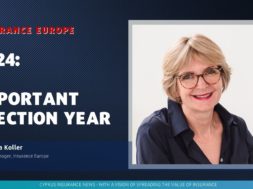Demystifying Professional Indemnity (PI) Insurance: Basic Concepts in a Global Environment

Ακολουθήστε μας στο Linkedin και συνδεθείτε με άλλους επαγγελματίες του κλάδου
Written by Stelios Miltiadou, Chartered Insurer
Professional Indemnity (PI) Insurance, also known as Professional Liability or Errors & Omissions (E&O) typically constitutes a segment of Financial Lines departments, which may also be named as FinPro or simply Professional Lines.
What is at risk?
Insurance is form of risk management, specifically it is a pre-loss risk transfer method.
The risk that is being insured in the case of PI is potential legal liability arising from professional services in the event that a third party claims to have suffered a loss as a result of professional negligence.
The main source of claims against professionals or firms is neglect, error, or wrongful advice and the nature of the damage involved is usually pure financial loss.
In order to establish so-called PI exposure, usually it must involve advice, design or specification for a fee. In the absence of this, many argue it would be unethical to offer a PI policy.
Who is at risk?
Typical professions that fall under the above category include, but are not limited to:
- Accountants
- Lawyers
- Architects
- Engineers
- Construction (Design & Build)
- Insurance Brokers
- Management Consultants
- Technology
- Media
- Surveyors
- Financial Institutions
The market has developed trade-specific policy wordings for each of the above professions. In case there isn’t a specific policy wording, a Miscellaneous wording may be used and the professional services of the insured are noted in the Policy Schedule.
For large construction projects it is common to use a Single Project PI (SPPI) wording. Unlike annually renewable policies, the policy is in force throughout the lifecycle of the Project.
Why purchase a PI policy?
In many jurisdictions certain professions are required by law to have a PI policy in place with minimum Limits of Indemnity and specific coverage requirements.
It may also be a contractual requirement for the customer in an agreement. Insurance requirement clauses may also have specific coverage parameters.
As with any type of insurance, it offers peace of mind financial protection and covers legal costs.
Coverage Aspects
PI policy wordings may be written on a ‘negligence’ basis or a ‘full civil liability’ basis. The main difference is that ‘negligence only’ wordings are restrictive and do not cover non-negligent breach of duty. Whereas, Civil Liability basis offer the broadest cover and will only exclude coverage which should be more suitably insured elsewhere. This is a requirement for certain professional bodies such as ICAEW, The Law Society, RICS and FCA.
The operative clause of PI policies is usually wide enough to include liability arising in tort or contract.
PI policies are written on a Claims-made basis, which means that that the insurer that will pay is the one that is on risk when the claim is made against the insurer. The date of the Wrongful Act may be extended with a Retroactive Cover. This is usually agreed when there is evidence of continuous cover with the same Retroactive Date. Underwriters should be cautious to check that continuity of the Limits of Indemnity too as they could find themselves providing Retroactive Cover for higher Limits than what the client purchased in the past. Additionally, the reporting period may be extended with an Extended Reporting Period clause, which allows the insured an additional period of time within which to report claims to the insurer.
The Limits of Indemnity may be on an Any One Claim or Aggregate basis. In a hard market, insurers usually use Aggregate basis to restrict capacity deployment. Additionally, defence costs may be Costs Inclusive or Costs in Addition. This means that they could be restricted within the Limit of Indemnity or to be added on top of the limit in case it is exhausted.
Multinational Considerations
It is important to note some cross-border differences when it comes to PI. In some jurisdictions, especially in Continental Europe, it is common to see that Professional Indemnity may attached as an extension to a Public Liability / General Third Party Liability policy. This means that it may also fall under the Liability Line of Business rather than traditional Financial Lines.
Furthermore, it may be the case that some countries define Professional Liability differently to the traditional definition. For example, insurers may call their product Professional Liability, however it is targeted at professions where there is no actual PI exposure in the form of advice, design or specification for a fee.
In some jurisdictions it is also common for the core cover of a Professional Liability policy to include third party property damage and bodily injury, which are traditionally covered under a Public / Products Liability policy.
Most insurers separate traditional PI also knowns as ‘Commercial’ PI from Financial Institutions. The guidelines and subject matter experts are usually different, although they would both fall under the umbrella of Financial Lines. This is usually the case for D&O as well.
Emerging Trends
Technology is evolving rapidly at a quicker pace than ever, especially with the advancement of Artificial Intelligence. This is leading to new unknowns and has resulted to some insurers to rethink their strategy on some professions such as PI Technology and Media. This has shifted the expertise of these professions to be more appropriately underwritten by Cyber experts. Moreover, some insurers tightening their appetite and withdrawing capacity when it comes to the IT professions. Consequently, the underwriting process may be more rigorous with additional questionnaires required.
Environmental, Social and Governance (ESG) is also affecting PI underwriting as it’s creating new exposures for all professions, especially lawyers and accountants and auditors due to the increase in stringent reporting requirements.
Who is the author?
Stelios Miltiadou holds an LLB Law degree from the University of Kent, an MSc in Insurance & Risk Management from Bayes Business School (formerly Cass), City University of London and an MBA from the University of Cyprus.
He holds the title of Chartered Insurer of the Chartered Insurance Institute as well as the International Certificate in Enterprise Risk Management (IRMCert) of the Institute of Risk Management. He started his insurance career at AIG Ireland in the Financial Lines department and having completed his studies was enrolled on the UK Commercial Insurance Graduate Scheme at Allianz. He then took over the responsibility of the D&O Liability portfolio for the thirteen UK regional branches in a head office role at Allianz. Currently, he is the Financial Lines Lead, Greece and Cyprus at Allianz. He is part of the small community of Gold accredited drivers of technical excellence and also hold the Multinational Certificate at Allianz. He often acts as Faculty for the Commercial Portfolio Management of the Allianz Global P&C Academy.






